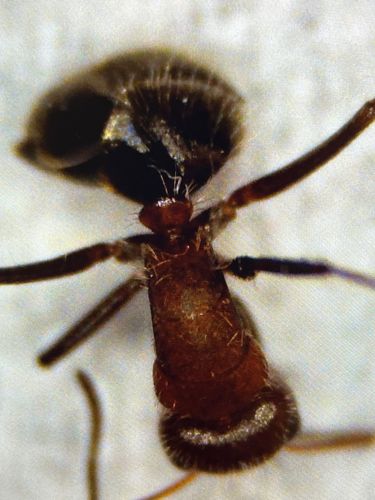Velvet Ant (likely a female)
Scientific Name: Mutillidae (specific species not identifiable from image alone)
Order & Family: Order: Hymenoptera, Family: Mutillidae
Size: Typically 0.5 to 2.5 cm (0.2 to 1 inch), though some species can be larger or smaller.

Natural Habitat
Typically found in sandy areas, open fields, grasslands, desert environments, and sometimes in suburban areas where ground-nesting hymenopterans are present.
Diet & Feeding
Adult velvet ants feed on nectar, water, and sometimes honeydew. The larvae are external parasites of the larvae and pupae within the nests of ground-nesting bees and wasps, consuming their host. Some species also parasitize beetle larvae.
Behavior Patterns
Velvet ants are solitary wasps. The wingless females are often seen running on the ground in sandy areas, seeking out nests of ground-dwelling bees and wasps to parasitize. They are active during the day. Males are winged and are typically seen flying low to the ground in search of females.
Risks & Benefits
Risk: Female velvet ants possess a very potent and painful sting, earning them the nickname 'cow killer' (though their sting is not fatal to cows). They are not aggressive but will sting if handled or stepped on. Benefit: As parasites of other insects, they can help regulate populations of their host species. As pollinators, they contribute to plant reproduction.
Identified on: 9/3/2025